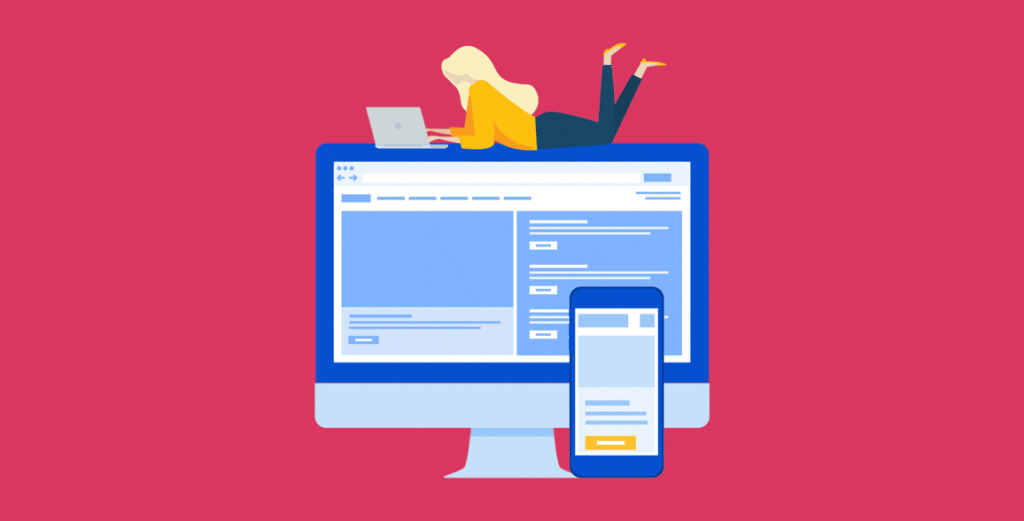Promoting independence through project-based learning

In schools, teachers set the agenda for what needs to be learned, and how, and by when. We set deadlines for the students to meet, we remind them of those deadlines regularly and, if it looks like a student is not going to meet that deadline, we swoop in and ‘intervene’ – especially as they approach GCSEs. We organise after-school revision sessions, we phone their parents and carers, we send reminders via their tutor‚Ķ we do whatever it takes to get them over the line. All of this is done with the best of intentions, mindful as we are of the need to use our time efficiently and to maximise the students’ chances of success. However, it has an unfortunate side-effect. Many pupils become so dependent on their teachers that they can’t do very much‚Ķ well, independently. As Boekaerts (2002) memorably put it:
‘Remarkably, in traditional classrooms there is not much room for self-regulated learning. Students are cognitively, emotionally, and socially dependent on their teachers who formulate the learning goals, determine which type of interaction is allowed, and generally coerce them to adjust to the learning environment they have created.’ (p. 594)
Coerce is a strong word, but you can see her point. The question almost asks itself: how can we expect pupils to learn how to self-regulate in such a top-down, micro-managed environment? Over the years, many people have concluded that the answer to this is to implement project-based learning (PBL), to allow pupils to develop independent learning skills. In theory, this is an appealing idea but in the context of a busy school curriculum, it can be difficult to do effectively. In this article, I will firstly attempt to provide some clarity about what we mean when we talk about self-regulated learning. Secondly, I will briefly review some key research relating to the use of PBL in schools. And finally, I will consider what effective PBL looks like in the classroom.
What is self-regulated learning?
According to the Education Endowment Foundation (2020), teaching pupils in such a way as to develop metacognition and self-regulation provides ‘high impact for very low cost, based on extensive evidence’. However, teachers are not always clear about what these terms mean, or what they look like in the classroom. Where does metacognition end and self-regulation begin? How are these ideas different, and how do they overlap? And what’s the difference between self-regulation and self-regulated learning?
In a recent article, I outlined a model of self-regulated learning that addresses these questions (Mannion, 2020). Metacognition and self-regulation are similar in that they involve two processes: monitor and control. Metacognition is concerned with cognition – i.e., thought processes – and so we can think of metacognition simply as monitoring and controlling our thought processes. Self-regulation is a broad concept that involves monitoring and controlling our feelings (physical and/or emotional) and our behaviours. Being concerned with such broad phenomena as thought processes, feelings and behaviours, metacognition and self-regulation clearly extend far beyond academic learning. For this reason, in schools, we use a more specific term – self-regulated learning – to describe the application of metacognition and self-regulation to learning (Figure 1).
Figure 1. Metacognition, self-regulation self-regulated learning.

How can we promote self-regulated learning in schools?
Zimmerman (2002) offers the following guide for how to spot a self-regulated learner, should you encounter an example of this rare species in the wild:
‘These learners are proactive in their efforts to learn because they are aware of their strengths and limitations and because they are guided by personally set goals and task-related strategies… These learners monitor their behaviour in terms of their goals and self-reflect on their increasing effectiveness. This enhances their self-satisfaction and motivation to continue to improve their methods of learning’ (p.65).
In order for students enter this virtuous cycle where learning becomes its own reward, we need to provide them with opportunities to practise monitoring and controlling their thoughts, feelings and behaviours in relation to their learning goals. As van Merriënboer and Kirschner (2018) suggest:
‘Because monitoring and control are closely linked to each other in the same learning cycle, it makes no sense asking learners to monitor their own learning (e.g., assess their own learning, reflect on their own learning processes) if they have no opportunity to control it‚Ķ It only makes sense to ask learners to monitor or reflect on their own performance when they are in a position to use their thoughts to control or plan future actions.’ (p. 277)
The message is clear. In order to allow students to control and plan their future actions, teachers need to take a step back, to find out (and to allow the pupils to discover) what they can and cannot do by themselves. This process of stepping back can be done in a measured way, for part of a lesson – or, we can really ‘throw them in at the deep end’ and set them a project that runs for several weeks.
In practical terms, there are three stages to developing self-regulated learning through PBL. First, we set the students a challenging project – something they have never done before; something they may feel is currently beyond them; something that requires them to stretch out into new territory – just beyond the edge of their comfort zone. Next, we provide them with the scaffolded support and guidance they need to get started, or to nudge them back on track when they get stuck. And finally, we withdraw that scaffoldingProgressively introducing students to new concepts to support their learning over time, until they are able to achieve success without constant supervision.
What does the research say about project-based learning?
The association between self-regulated learning and PBL makes logical and intuitive sense, and it is also a link that has repeatedly been made many times in the research literature (e.g. English and Kitsantas, 2013; Stefanou et al., 2013). However, PBL is a broad church – it means different things to different people – and, as might be expected, research looking at the impact of PBL on academic outcomes reveals a mixed picture (Condliffe et al., 2017).
For example, a recent randomised controlled trial looked at the effect of PBL on literacy among Year 7 students (Menzies et al., 2016). This study found that PBL had ‘no clear impact on either literacy‚Ķ or student engagement with school and learning’ (p. 4), and that ‘project-based learning may have had a negative impact on the literacy attainment of pupils entitled to free school meals’ (p. 4). However, this study begs the question: why should PBL help pupils develop their literacy skills? Some things lend themselves more to direct instructionA method of instruction in which concepts or skills are taught using explicit teaching techniques, such as demonstrations or lectures, and are practised until fully understood by each student, and the teaching of literacy surely falls into this category. If reading and writing is your goal, put the PBL down and teach them how to read and write!
When the aim is to develop the skills of self-regulated learning, rather than teaching subject content, there is evidence that PBL can be effective at improving outcomes – including academic subject learning. For example, for my PhD I carried out an 8-year evaluation of a Learning to Learn curriculum that centrally featured PBL as part of a wider ‘complex intervention’. This evaluation found that the Learning to Learn programme led to significant learning gains across the curriculum at GCSE, with accelerated gains among students from disadvantaged backgrounds (Mannion, 2018). These findings align with previous research reporting a positive overall relationship between self-regulation and academic achievement (Duckworth et al., 2009). Elsewhere, research has found that problem-based learning – closely related to PBL – is associated with improved long-term retention of content knowledge, problem-solving and attitudes to learning (Strobel and van Barneveld, 2009; Walker and Leary, 2009).
Despite such positive research findings, it is widely acknowledged that PBL can be difficult to implement effectively within the context of a busy school curriculum (Barron and Darling-Hammond, 2008). Condliffe et al (2017) outline a number of recommendations for how to make PBL effective. These include having design principles that:
- are measurable and observable, so that the impact of PBL as a method of achieving your goals can be evaluated;
- pay close attention to the content you want the students to learn, and use authentic assessment methods;
- are informed by practice and/or designed with practitioners, so that the teacher feels a sense of ownership over the process; and
- are adapted to fit the local context – planning PBL with explicit curriculum goals in mind.
In conclusion
As with anything, you can do PBL badly and you can do it well, and these design principles provide useful guidance for how to make PBL work effectively in a classroom context. However, it is also important to remember that PBL is not suited to all curriculum goals. If your aim is to teach the children how to conjugate the verb ‘to be’ in French, or about the reactivity of alkali metals in science, direct instruction is likely to be far more effective. If, however, your aim is for students to learn how to regulate their own learning, then PBL is a sensible way forward because it allows the teacher to step back and ascertain what the students can and can’t do in the absence of constant supervision. When students learn to set goals and work towards achieving them independently, this helps set them up for success in their exams, as well we preparing them for a life of learning beyond the school gates where there isn’t always (or really ever) a teacher to tell them what to do, and how, and by when.
Key questions
- Are you persuaded by the argument that PBL can be an effective method for helping children learn how to regulate their own learning?
- Have you ever tried PBL before? What went well? What did you find challenging?
- What opportunities for PBL are there within your role currently?
References
Barron B and Darling-Hammond L (2008) Teaching for meaningful learning: A review of research on inquiry-based and cooperative learning. In: Powerful Learning: What We Know About Teaching for Understanding. San Francisco, CA: Jossey-Bass, pp. 11-70.
Boekaerts M (2002) Bringing about change in the classroom: Strengths and weaknesses of the self-regulated learning approach. Learning and Instruction12(6): 589-604.
Condliffe B, Quint J, Visher MG, et al. (2017) Project-Based Learning – a Literature Review. NY: MDRC. Available at: https://www.mdrc.org/sites/default/files/Project-Based_Learning-LitRev_Final.pdf (accessed 11 June 2020).
Duckworth C, Akerman R, MacGregor A, et al. (2009) Self-regulated learning: A literature review. Centre for Research on wider benefits of learning: Research Reports, 33.
Education Endowment Foundation (2020) The Teaching and Learning Toolkit. Available at: https://educationendowmentfoundation.org.uk/evidence-summaries/teaching-learning-toolkit/meta-cognition-and-self-regulation (accessed 11 June 2020).
English MC and Kitsantas A (2013) Supporting student self-regulated learning in problem- and project-based learning. Interdisciplinary Journal of Problem-Based Learning 7(2): 127-150.
Mannion J (2018) Metacognition, Self-regulation, Oracy: A Mixed Methods Case Study of a Complex, Whole-School Learning to Learn Intervention. Doctoral thesis, Hughes Hall, University of Cambridge. Available at: https://doi.org/10.17863/CAM.36395 (accessed 11 June 2020).
Mannion J (2020) Metacognition, self-regulation and self-regulated learning: What’s the difference? Impact 8: 66-69.
Menzies V, Hewitt C, Kokotsaki D, et al. (2016) Project Based Learning: Evaluation report and executive summary. London: Education Endowment Foundation.
Stefanou C, Stolk JD, Prince M, et al. (2013). Self-regulation and autonomy in problem- and project-based learning environments. Active Learning in Higher Education 14(2): 109-122.
Strobel J and van Barneveld A (2009) When is PBL more effective? A meta-synthesis of meta-analyses comparing PBL to conventional classrooms. Interdisciplinary Journal of Problem-Based Learning 3(1): 44-58.
van Merriënboer JJG and Kirschner PA (2018) Ten steps to complex learning (3rd ed.). New York, NY: Routledge.
Walker A and Leary H (2009) A Problem Based Learning meta-analysisA quantitative study design used to systematically assess the results of multiple studies in order to draw conclusions about that body of research: Differences across problem types, implementation types, disciplines, and assessment levels. Interdisciplinary Journal of Problem-Based Learning 3(1): 12-43.
Zimmerman BJ (2002) Becoming a self-regulated learner: An overview. Theory into Practice 41(2): 64-72.











Very interesting, thank you. As I think about the KS3 design and technology curriculum this is a focus. Wondering how a school focus on these ideas could be led by art/design/technology where learning is primarily done through problem based learning